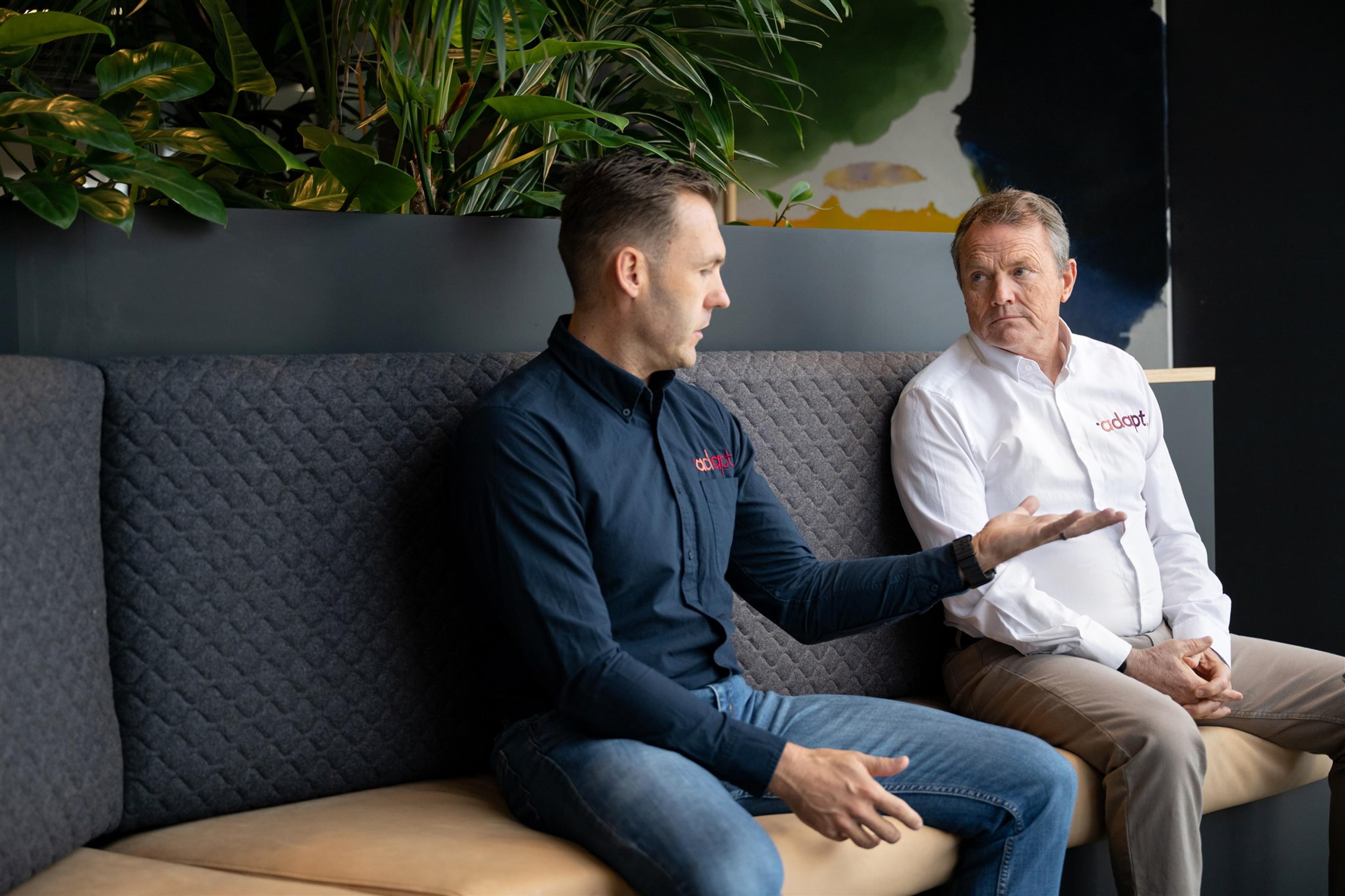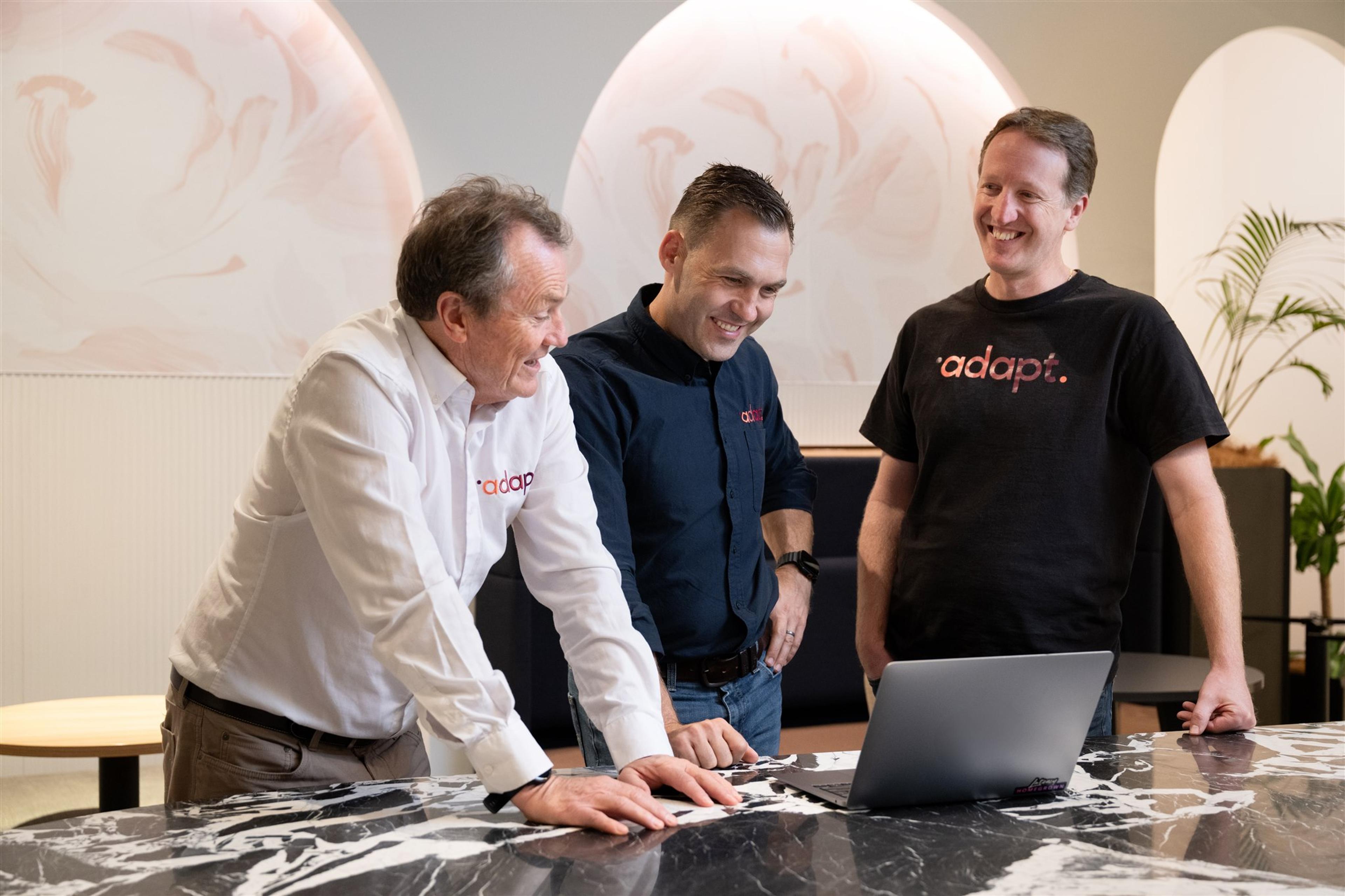Build Your Business Beyond You

Many SME owners start with full control of their business. While this may feel necessary, it often leads to long-term struggles. Owners handle every decision, oversee every operation, and drive all revenue, creating an organisation that depends entirely on their presence. While this model may seem efficient in the early stages, it can quickly become a major constraint on business growth, scalability, and sustainability.
Without the right succession infrastructure, SMEs remain owner-centric, making it difficult to transition leadership, expand operations, and secure long-term stability. Business owners who fail to address this dependency early often find themselves trapped—unable to step away without disrupting operations, suffering from burnout, or struggling to find a viable exit strategy.
What is Succession Thinking™?
Succession Thinking™ is a proactive approach that embeds business independence from the start. Unlike traditional succession planning, which focuses on exit strategies and ownership transfers at later stages, it builds leadership, culture, and operations that can continue beyond the owner throughout the company’s lifecycle.
At its core, Succession Thinking™ is about designing a business that is not reliant on any single individual—including the founder. By integrating role clarity, leadership development, cultural continuity, and systemisation early on, SME owners can build a company that operates independently, reducing risk and maximising long-term value.
Why This Matters
Building a business goes beyond short-term profitability, focusing on creating something sustainable and resilient. When an SME is too dependent on its owner, it becomes difficult to scale, transition leadership, or sell the business. Investors, partners, and successors seek businesses that function efficiently without heavy owner involvement.
This guide explores how implementing early succession infrastructure can:
- Reduce owner dependency so the business can operate without direct daily involvement.
- Increase business resilience making it more adaptable to economic shifts and leadership transitions.
- Operational instability making the business more attractive to potential buyers, investors, and successors.
By adopting Succession Thinking™ from day one, SME owners can set their business up for long-term success, allowing it to continue growing—whether they decide to stay in charge or transition out in the future.
Why Owner-Led Businesses Get Stuck
Many SME owners take on multiple roles—decision-maker, strategist, problem-solver, and even frontline worker. While this hands-on approach may be essential in the early stages, it eventually creates bottlenecks that hinder business growth.
- Owners struggle to step away without impacting operations – The business cannot function without them, making delegation difficult.
- Decision-making slows – Every decision must go through the owner, delaying progress and frustrating employees.
- Growth stalls – Lack of leadership development and delegation prevents the business from scaling effectively.
- Employees lack autonomy – A culture of dependency forms, where staff are hesitant to make decisions or take initiative.
Without a structured succession plan, SME owners become irreplaceable. This stifles innovation, prevents key employees from taking on greater responsibilities, and ultimately limits the business's potential.
The 'Too Essential to Step Back' Problem
Many SME owners find themselves unable to step back, even when they want to. Without a clear succession infrastructure, stepping away becomes impossible without serious operational consequences. This leads to:
- Burnout – Owners become overworked, juggling too many responsibilities with no relief.
- Business Stagnation – Without leadership distribution, the business cannot grow beyond the owner's capabilities.
- Exit Difficulties – Businesses heavily reliant on one person struggle to find buyers or investors, reducing their market value.
- Increased Risk – If the owner falls ill or faces unexpected challenges, the business is at risk of collapse.
This lack of succession infrastructure creates instability, making the company vulnerable to disruption when the owner needs to step away, either temporarily or permanently.
The Lack of Early Succession Planning Reduces Business Value
- SMEs with strong leadership succession outperform those without – Businesses that develop leadership pipelines are more resilient and adaptable to market shifts.
- Buyers and investors prefer businesses that are not overly dependent on the founder – A well-structured leadership team makes a company more attractive to buyers and investors.
- Poor leadership transitions are a leading cause of SME failure – Studies show that inadequate succession planning contributes significantly to the failure of small and medium-sized businesses.
- A lack of documented processes and systems reduces valuation – Investors seek businesses with clear operational systems and leadership frameworks, providing continuity beyond the current owner.
Failing to implement Succession Thinking™ early limits growth potential and reduces the overall value of the business. SMEs that are too dependent on their founders struggle to scale, attract investors, and create sustainable long-term success.
What is Succession Thinking™ & Why Start Early?
Succession Thinking™ vs traditional succession planning
Traditional succession planning typically focuses on retirement or selling the business, treating succession as an event that happens at the end of an owner's career. This reactive approach often leads to rushed transitions, misaligned leadership, and businesses struggling to operate without their founder.
Succession Thinking™ is a long-term strategy embedded from day one. It embeds leadership, culture, and operational continuity into the company’s DNA, creating a self-sustaining business that prospers beyond its original owner. This proactive approach reduces the risk of owner dependency, allowing for seamless leadership transitions and sustained business growth.
The five principles of Succession Thinking™
1. Seek role clarity – Clearly define and document roles beyond the owner. Without role clarity, the business structure becomes chaotic, making transitions difficult and leading to confusion among employees.
2. Build your owners’ vision – Align long-term business goals with decision-making. A clear vision provides direction and ensures all stakeholders work toward common objectives, strengthening overall business strategy.
3. Build leadership beyond you – Develop and empower future leaders. Leadership should not be concentrated on a single individual. Establishing a leadership pipeline allows the business to grow sustainably and remain resilient during times of transition.
4. Build leadership beyond you – Create a values-driven organisation. Business culture is a key differentiator, and embedding core values into daily operations maintains continuity even as leadership evolves.
5. Build 'Your Business Way' – Systemise operations for consistency and scalability. Businesses that document their processes and operating procedures become more efficient, easier to scale, and more attractive to investors.
Why early implementation is key
- More resilient - With leadership distributed and operational processes clearly documented, the business can navigate challenges without disruption.
- Easier to scale - A well-structured business with defined roles and systems allows leadership teams to drive expansion without over-reliance on the owner.
- More valuable - Investors and buyers prefer well-structured businesses with leadership depth, established operational frameworks, and a clear long-term vision.
By embedding these principles early, SMEs create a foundation for long-term success. When leadership succession, cultural continuity, and business processes are already ingrained, the company can transition smoothly through any change, maintaining stability and continued growth.
Practical Steps to Reduce Owner Dependency
Step 1: Define & document 'Your Business Way'
- Identify key business processes and develop Standard Operating Procedures (SOPs) to ensure consistency.
- Record and store critical knowledge in an accessible and structured format to streamline operations and training.
- Establish key performance metrics to track business efficiency and ensure sustainability beyond the owner's involvement.
Step 2: Implement leadership development early
- Identify high-potential leaders within the organisation and equip them with essential skills for future leadership roles.
- Create a structured leadership development programme that includes mentoring, coaching and formal training.
- Encourage decision-making autonomy, allowing future leaders to gain confidence in their responsibilities.
Step 3: Systemise decision-making
- Develop clear decision-making frameworks to distribute authority and reduce reliance on the owner.
- Implement guidelines and escalation processes for critical decisions, ensuring business continuity.
- Establish team accountability structures, empowering employees to take ownership of their roles.
Step 4: Build a culture of ownership & accountability
- Encourage team-driven problem-solving, allowing employees to take initiative rather than deferring to the owner.
- Embed company values into daily operations to maintain continuity regardless of leadership changes.
- Reward proactive decision-making, reinforcing a culture of shared responsibility across the organisation.
Step 5: Gradually shift operational control
- Start delegating responsibilities gradually so processes run smoothly without the owner's intervention.
- Establish regular review mechanisms to assess the effectiveness of delegation and make necessary adjustments.
- Track leadership performance and adaptability, refining strategies as the team evolves.
By following these steps, SME owners can reduce dependency, allowing their businesses to operate independently while promoting long-term growth and sustainability.
The Business Benefits of Early Succession Infrastructure
Strong business valuation
Businesses with structured succession plans are far more attractive to investors and potential buyers. A company that operates independently of its founder demonstrates stability, continuity, and reduced risk, factors that increase its market value. Investors are drawn to businesses with well-documented processes, established leadership, and scalable operations, as these reduce the uncertainty associated with a change in ownership.
Systemisation plays a key role in increasing a business’s valuation. With clearly defined Standard Operating Procedures (SOPs) and structured workflows in place, the business runs efficiently, even during leadership transitions. This makes selling, expanding, or attracting outside investment easier, as buyers view the company as an asset rather than a risk.
Scalability & growth
One of the greatest benefits of early Succession Thinking™ is the ability to scale and grow sustainably. Businesses that focus on leadership development and implement systemised decision-making frameworks can expand without being hindered by the owner’s availability.
By establishing a leadership team that is trained, empowered, and accountable, owners can transition from working in the business to working on the business. This shift allows them to focus on high-level strategy, expansion opportunities, and innovation rather than being overwhelmed by daily operations.
Companies that prioritise Succession Thinking™ from the outset can more effectively expand into new markets, launch new services, and manage rapid growth. The ability to scale without constant owner intervention allows long-term viability and a competitive advantage.
Less stress & more freedom for owners
Reducing owner dependency directly improves work-life balance and well-being. Many SME owners experience burnout because they feel their business cannot function without them. Implementing early succession planning allows owners to gradually step back, distribute responsibilities, and build a team capable of managing operations effectively.
With a structured succession plan in place, owners gain the freedom to take extended breaks, focus on personal interests, or transition into advisory roles, all while ensuring business continuity. This creates a more fulfilling professional and personal life, reducing the stress of being the sole decision-maker.
A well-trained leadership team in place means that unexpected absences due to illness, family matters, or personal emergencies do not derail the company’s operations. Business resilience is strengthened by distributing leadership rather than concentrating it on one individual.
Smoother ownership transitions
Whether an SME owner plans to pass the business to family, sell to an external buyer, or transition leadership to an internal team, having a succession infrastructure supports a smooth, well-organised transition.
- For family businesses, Succession Thinking™ prevents leadership uncertainty and reduces conflicts among potential heirs or successors.
- For leadership teams, early succession planning helps ensure the next generation of business leaders is well-prepared and capable of taking over operations seamlessly.
- For external buyers, businesses that operate independently of the owner are significantly more appealing because they pose lower acquisition risks.
A strong succession framework provides long-term security for employees, customers, and stakeholders. Team members gain more confidence in the future of the business when clear leadership pathways and structured growth plans are in place. This boosts retention, morale, and engagement, helping the business remain stable and competitive even through ownership changes.
By implementing early succession infrastructure, SME owners build a resilient, scalable, and valuable business. This guarantees that when a transition occurs, whether planned or unexpected, the company remains strong, profitable, and uninterrupted.
Common Challenges & How to Overcome Them
Challenge 1: Letting go of control
Many SME owners struggle to step back from daily operations because they feel no one else understands the business as well as they do. This mindset can cause stagnation, bottleneck decision-making, and increase stress. Owners often find it difficult to trust others to handle key responsibilities, fearing mistakes or inefficiencies.
Solution: Implement gradual delegation with structured accountability. Start by delegating small, non-critical tasks and progressively hand over more responsibility. Set up clear accountability structures with performance metrics, allowing owners to monitor progress without micromanaging. Regular check-ins and feedback loops ensure that delegation is effective and that employees feel supported rather than overwhelmed.
Challenge 2: Trusting employees to lead
A major concern for business owners is whether employees are ready to take on leadership roles. Without proper preparation, employees may struggle with decision-making, and owners may hesitate to step back.
Solution: Invest in leadership development early. Identify high-potential employees and provide structured mentorship programmes, training workshops, and opportunities to take on leadership responsibilities. Encourage decision-making autonomy in a controlled environment, allowing employees to build confidence. Owners can gradually step away by consistently developing internal leadership while maintaining business continuity.
Challenge 3: Resistance to process change
Employees and long-term team members often resist changes in company processes, especially when transitioning from an owner-led model to a more structured, delegated system. Resistance can stem from uncertainty, fear of additional responsibilities, or reluctance to change established working methods.
Solution: Embed Succession Thinking™ into company culture by gradually reinforcing the value of structured systems and delegation. Communicate the benefits of process changes clearly, showing how they improve efficiency and long-term stability. Engage employees in the process by seeking their feedback and making gradual changes instead of implementing them abruptly. Create an environment where employees feel empowered rather than forced into new responsibilities.
Challenge 4: Financial barriers to leadership development
Some SME owners hesitate to invest in leadership training due to perceived costs. Training programmes, mentorship, and development initiatives require time and financial resources, which may seem challenging for small businesses with limited budgets.
Solution: Budget for training and mentorship as part of long-term growth planning. Leadership development should be seen as an investment rather than an expense. SMEs can start small by providing internal mentoring, cross-training, and peer learning opportunities before progressing to external courses or coaching. Government grants, industry associations, and business networks may provide funding or subsidised leadership training resources.
By addressing these challenges proactively, SME owners can implement early succession thinking effectively to prepare their businesses for growth, leadership transition and long-term sustainability.
Key Takeaways
Succession Thinking™ is not just about planning for an eventual exit—it is about building a resilient business that can operate, grow, and succeed independently of its owner. By embedding leadership development, systemisation, and structured decision-making early on, SME owners can ensure their business is prepared for challenges and opportunities. A company that does not rely on a single individual is more adaptable, scalable and valuable.
Embedding Succession Thinking™ as a core strategy leads to a business that flourishes beyond the owner’s direct involvement. It reduces operational risks, enhances long-term sustainability, and increases the attractiveness of the business to investors, stakeholders and successors.
Take action today
Waiting until retirement or an unexpected event to implement a succession strategy is risky. Succession Thinking™ should begin as early as possible to build a company that can stand independently, enabling owners to enjoy greater flexibility, reduced stress and more strategic control over their long-term goals.
Business owners who take proactive steps now will benefit from a more sustainable organisation, a clearer path to leadership transition, and a business that continues to generate value beyond their direct involvement.
Explore adapt's Succession Strategy Services to learn how to develop a business infrastructure that supports independence, growth, and longevity.
Learn More About SME Resilience & Leadership Development and take the next step in securing your company’s future beyond you.
Build a business that lasts. Start implementing Succession Thinking™ today.




